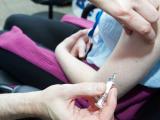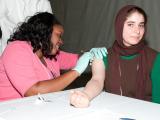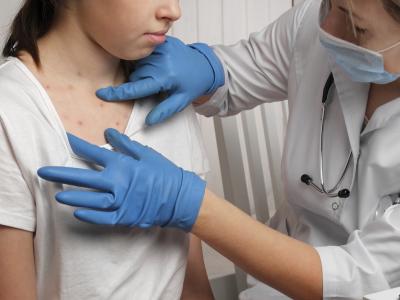Jan 14, 2011
Flu vaccination rates in African-Americans lag other groups
Although combined seasonal and pandemic H1N1 influenza vaccine uptake was high in 2009 and 2010, non-Hispanic blacks lagged behind whites, Hispanics, and other minority groups, according to a report from the US Centers for Disease Control and Prevention (CDC). That trend is also reflected in vaccination rates over the past 10 flu seasons among people 65 years and older, according to the article in Morbidity and Mortality Weekly Report (MMWR). The data, based on telephone surveys of 514,785 people conducted through the Behavioral Risk Factor Surveillance System and the National 2009 H1N1 Flu Survey, show that 61.2% of Hispanics received either the seasonal flu vaccine or H1N1 vaccine last season. This compares with 53.8% of whites, 49.4% of blacks, and 63.5% of other minorities, including Asians, Native Americans, and Pacific Islanders. Some of these minority groups were hit particularly hard by the 2009 H1N1 pandemic. Among those 65 and over, the CDC data show that 72% overall and 73.9% of whites received a flu vaccine in 2009-10. In this age-group whites have held that statistical edge over the past 10 years, recording vaccination rates 15 to 23 percentage points higher than blacks, 7 to 16 points higher than Hispanics, and less than 1 to 11 points higher than other minorities.
Jan 14 MMWR report
BioCryst reports peramivir trial findings
BioCryst Pharmaceuticals, maker of the intravenous (IV) neuraminidase inhibitor peramivir, yesterday announced initial results for one of its phase 3 studies and said it plans to modify a second phase 3 study. During the 2009 H1N1 pandemic federal officials allowed clinicians to use the drug to treat critically ill patients under an emergency authorization, which expired in June 2010. In a press release, BioCryst said a recently completed phase 3 study to test the safety and antiviral effect of peramivir involved 234 patients aged 14 to 92 who were hospitalized with 2009 H1N1 infections. The drug, in a once daily 600 mg infusion or a twice-daily 300 mg infusion, was given to 230 patients, 170 (74%) of whom had been treated earlier with oseltamivir (Tamiflu). The intent-to-treat group consisted of 127 patients with confirmed 2009 H1N1 infections, who were treated an average of 5 days. Influenza virus titer declined in nasopharyngeal samples over the first 48 hours for both groups, and the drug was generally safe and well tolerated for both. In the intent-to-treat group, fever resolved in about 25.3 hours, and clinical resolution averaged 92 hours. BioCryst said it would present a detailed report at an upcoming medical meeting. The company's other phase 3 study is designed to assess the efficacy and safety of the once-daily dose with standard care versus standard care alone. BioCryst said it is proposing to enroll more patients in the study and modify its design to improve the chance of a favorable clinical outcome. The firm has asked the US Department of Health and Human Services for more funds to complete the study with the changes, which it expects will delay the completion of patient recruitment beyond this year.
Jan 13 BioCryst press release
















